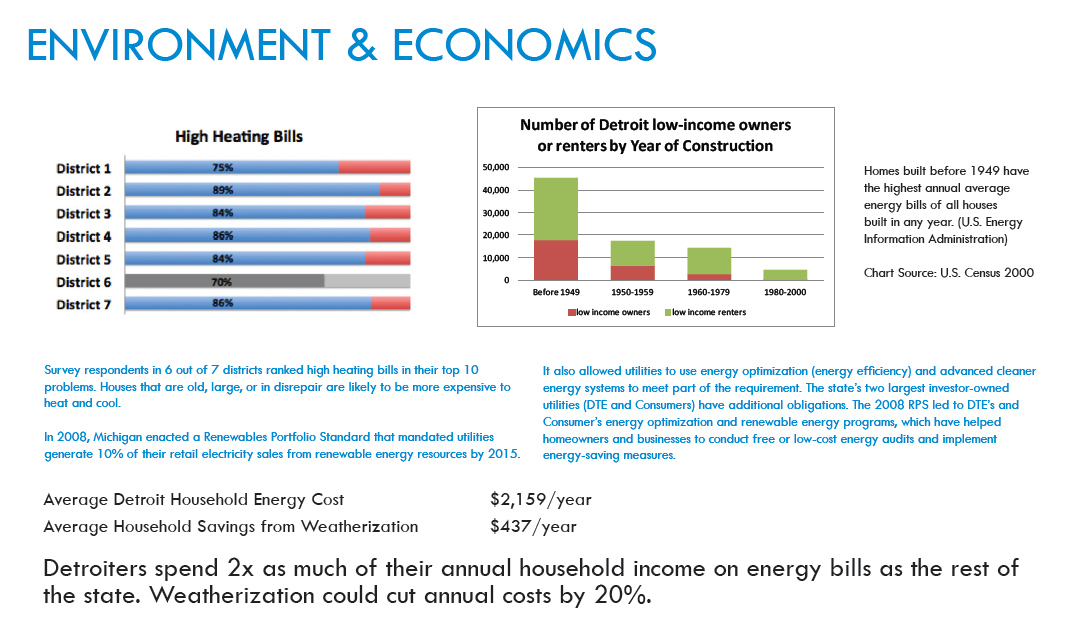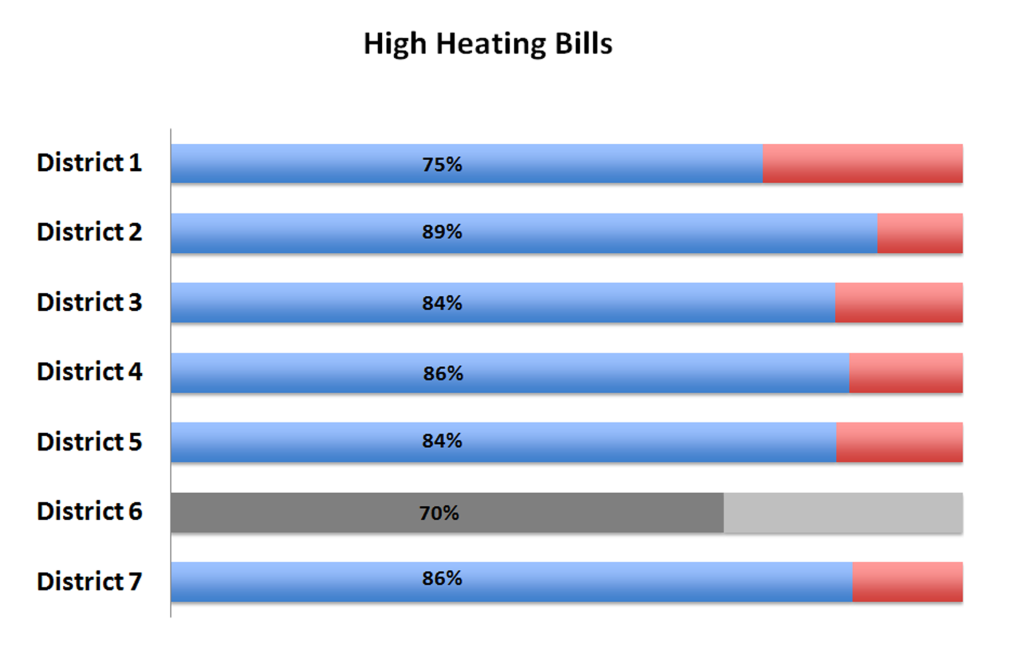Click here for the full Environment & Economics section
SEE FULL TEXT BELOW:
ENVIRONMENT & ECONOMICS
Chart Source: U.S. Census 2000
Homes built before 1949 have the highest annual average energy bills of all houses built in any year. (U.S. Energy Information Administration)
Survey respondents in 6 out of 7 districts ranked high heating bills in their top 10 problems. Houses that are old, large, or in disrepair are likely to be more expensive to heat and cool.
In 2008, Michigan enacted a Renewables Portfolio Standard that mandated utilities generate 10% of their retail electricity sales from renewable energy resources by 2015.
It also allowed utilities to use energy optimization (energy efficiency) and advanced cleaner energy systems to meet part of the requirement. The state’s two largest investor-owned utilities (DTE and Consumers) have additional obligations. The 2008 RPS led to DTE’s and Consumer’s energy optimization and renewable energy programs, which have helped homeowners and businesses to conduct free or low-cost energy audits and implement energy-saving measures.
Average Detroit Household Energy Cost – $2,159/year
Average Household Savings from Weatherization – $437/year
Detroiters spend 2x as much of their annual household income on energy bills as the rest of the state. Weatherization could cut annual costs by 20%.
72 cents of every dollar spent on energy by Michigan’s citizens and businesses flows out of the state. Burning coal costs the U.S. $500 billion in health and environmental costs every year.
Table: Total Emissions, DTE Energy Electrical Generators, Wayne County, 2008, EPA National Emissions Inventory
Image: The Green Garage in Midtown cut energy demand by 90% with a solar thermal water heater, and passive design strategies, including a white roof, natural lighting, triple-glazed windows and extra-thick insulation, and high-efficiency mechanical systems.
Courtesy: Green Garage
DTE Energy, the major provider of electricity in Detroit, generated 7,537,732 MWh of electricity from the facilities that it directly owns and operates in Wayne County, resulting in emissions of over 6 million metric tons of CO2 of greenhouse gases, and hundreds of thousands of tons of other Criteria Air Pollutants that harm human health.
22% of DTE’s “renewable energy” comes from the Detroit incinerator (renamed “Detroit Renewable Power, LLC and indicated in yellow on the chart), which is the third largest source of electricity plant-generated carbon emissions in Wayne County.
In addition to improving air quality and helping electricity users save, energy efficiency and clean energy can help Michigan’s economy. After the RPS was passed, Michigan increased its capacity to generate renewable energy by nearly 7,000%, and 94% of it was from new local wind power (MI Manufacturers Association, MI Public Service Commission 2013). Michigan imports 97% of its petroleum needs, 82% of its natural gas, and 100% of coal and nuclear fuel from other states and nations. (“Michigan Energy Overview,” Michigan Public Service Commission October 2011).
Ann Arbor’s Energy Office has saved city taxpayers more than $5 million in energy expenditures over the last decade. It has also obtained and managed over $2 million in grants and rebates from federal, state, and corporate sources.
While renewable energy is often held to a high standard for cost competitiveness with fossil fuels, over a century of subsidies has led to cheaper price of fossil fuels. A 2011 report from the International Energy Agency stated that fossil fuels currently receive subsidies through some 250 mechanisms. In addition, a Harvard Medical School study found that the extra health and environmental costs of burning coal in the United States amount to $500 billion per year.






